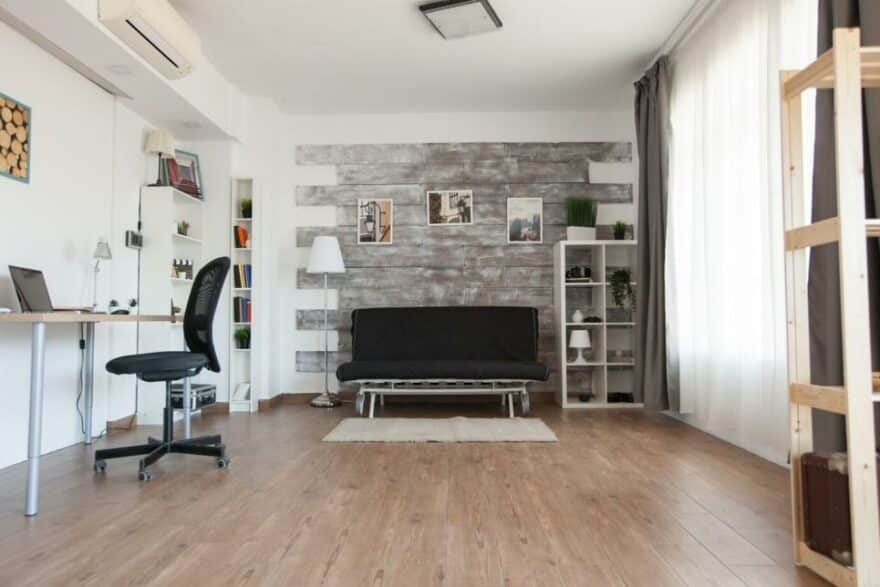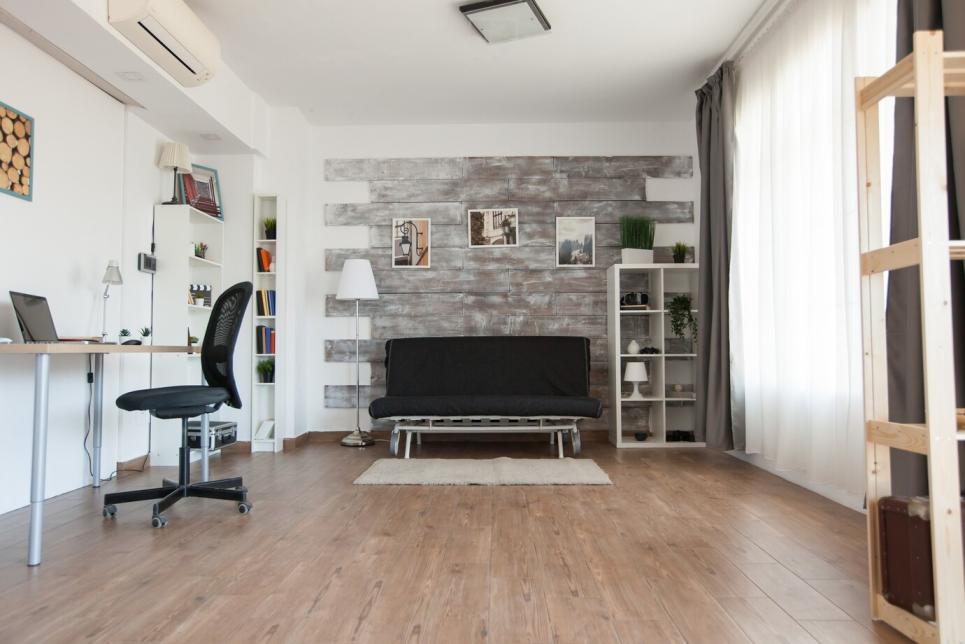Working from home comes with its perks—no commute, mid-day laundry loads, and wearing slippers during a conference call. But when you’re running a business out of your living room, the line between personal and professional can blur fast. Whether you’re hosting a virtual pitch or welcoming a client for a sit-down strategy session, your space should back you up, not work against you. A smartly designed home office helps you stay focused, feel credible, and keep your operations secure—without turning your home into a fluorescent box.
Define the Boundaries of Your Workspace
Start by carving out a space that isn’t just a spare corner or the end of the kitchen table. Even if you don’t have a dedicated room, you can define your office with smart furniture placement, shelving, or a freestanding partition. Having a visual and psychological separation between “work” and “home” helps reduce distractions and tells clients you take their time—and your business—seriously. Plus, when it’s time to unplug, you’ll be less likely to mentally drag your to-do list into the rest of your house.
Upgrade Your Audio and Visual Setup
You might think you sound fine over Zoom, but the crackle of a cheap mic or the shadowy glow of overhead lighting can quietly chip away at your professional presence. Invest in a decent webcam, a ring light, and an external microphone to give virtual meetings the polish they deserve. Not only will your clients hear and see you more clearly, but you’ll feel more confident knowing your setup isn’t doing you any disservice. It’s a relatively small investment that pays for itself in credibility and clarity.
Secure the Space for Confidential Conversations
Whether you’re discussing contracts, sharing financials, or brainstorming proprietary ideas, privacy matters—especially if you’re dealing with sensitive client data. Install a solid-core door or even some acoustic panels if the walls are thin, and use noise-canceling machines or soft background music to mask private calls. A lockable file cabinet for physical documents and password-protected drives for digital files should be non-negotiable. Clients need to trust that when they step into your home office—or log into your Zoom link—what’s shared there stays there.
Safeguarding Your Business With Home Warranty Coverage
When your office is inside your home, even a minor electrical glitch can throw a wrench into your day—shutting down devices, freezing calls, or knocking out key tools you rely on. Investing in a solid protection plan is one way to shield your operations from unexpected disruptions and avoid costly out-of-pocket repairs. A home electrical warranty that includes interior electrical lines and components can help cover everything from faulty outlets and light switches to hidden wiring issues and hard-wired connections.
Design With In-Person Meetings in Mind
Even if most of your work happens online, there’s still something powerful about a face-to-face sit-down. If your business includes occasional home visits, consider how your office looks and feels to someone seeing it for the first time. Comfortable guest seating, a clean surface to sit across from, and a fresh-smelling space go a long way toward making someone feel welcome and at ease. Keep personal items like laundry baskets or kids’ toys out of sight—it’s your home, yes, but it’s also your storefront.
Master the Lighting Game
Natural light is great, but it’s not always dependable—especially when your big pitch is scheduled for 4:30 p.m. on a cloudy day. A mix of overhead lighting and adjustable desk lamps helps create a workspace that feels vibrant and functional, no matter the time. For virtual meetings, avoid sitting with a window directly behind you—it’ll wash out your face and make you look like a silhouette. Think about how the light moves through the room at different times of day and plan accordingly.
Make Your Background Work For You
Whatever your webcam sees is part of your brand now. That doesn’t mean you need a sterile, Pinterest-worthy wall behind you—but what’s in frame should feel intentional and free from clutter. A simple bookshelf, a framed certificate, a plant or two—these add personality without distraction. Avoid anything too busy or reflective, and definitely keep anything personal (like that slightly embarrassing vacation magnet collection) out of sight.
Prioritize Comfort Without Sacrificing Style
You’ll spend a huge chunk of your day in this room, so don’t force yourself into a cold, ultra-corporate look just for the sake of appearances. Choose a chair that supports your back and a desk that fits your actual working style, not just the dimensions of the space. Personal touches like a favorite mug, soft throw, or art that inspires you can create a vibe that helps you stay productive without draining your energy. The trick is to strike a balance between the kind of office you want to walk into and the one you’d feel confident inviting a client into.
Conclusion
You’re not just running a business—you’re inviting others into your process, your ideas, and your brand. A home office that functions well for both digital and in-person meetings isn’t just practical; it’s a signal that you take what you do seriously. It says you’ve thought about the details, you care about the experience, and you respect the people you work with. Build a space that backs you up—and let your best work speak for itself.



1 thought on “Balancing Professionalism and Comfort: Building the Ideal Home Office for Entrepreneurs”